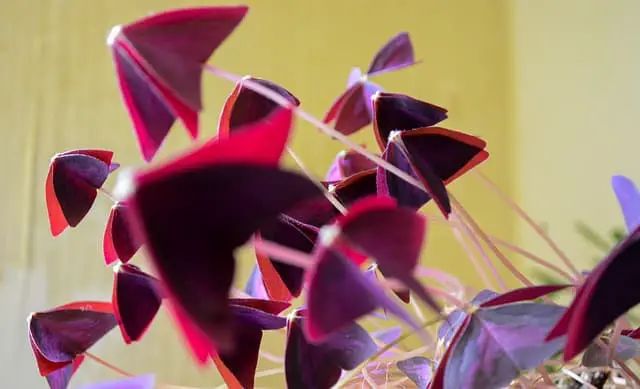Are you concerned on why is my oxalis drooping? Oxalis triangularis or simply oxalis plant is a household adored by many collectors and gardening enthusiasts. This plant can flourish in a pot indoors or better, you can fully enjoy it indoors.
The shamrock plant or oxalis produces a range of flowers in various bright and deep colors. Despite being tough and easy to grow, these plants are prone to droopiness for several reasons.
Even if you have been taking care of your Oxalis for years, it might start to look dull and lifeless under certain conditions. To know more about why is my Oxalis drooping, read further.
Key Takeaways
- Oxalis plants go through a dormant period, which can cause drooping and leaf loss.
- Improper watering and lack of sunlight can also cause Oxalis drooping.
- Understanding the cause of Oxalis drooping is essential in reviving the plant.
Why Is My Oxalis Drooping?
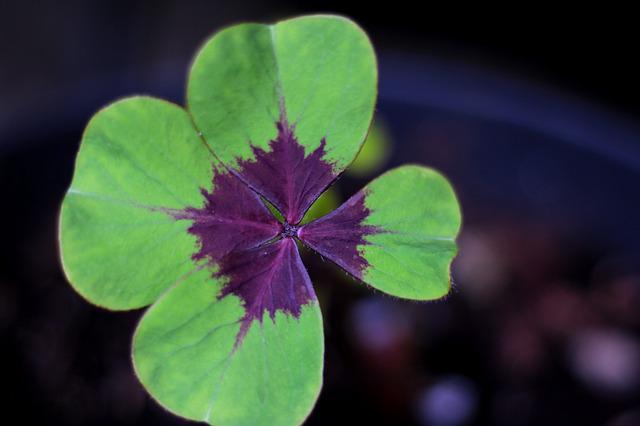
The unique colors of Oxalis leaves make them a popular houseplant. The leaves on these plants are triangle-shaped and fold at night and open in the morning. Beautiful blooms occur throughout the year on these plants.
Unfortunately, the foliage of these amazing plants is prone to droopiness, even if these plants are super easy to grow. When the plant is drooping, its foliage appears lifeless and dull, as if it’s going to die any minute.
Oxalis may begin to droop when they are not adequately watered, but more often than not, they begin to droop as they enter dormancy at the end of their growing season.
If your oxalis plant seems to be drooping due to dormancy, you have a couple of options. If they don’t expect this period of dormancy, they think they have killed their Oxalis. Oxalis plants have symmetrical leaves that may look as though they are attached to straight and upright stems.
The leaves of droopy Oxalis become flaccid while the stems bow downward. The following reasons in Oxalis plants can cause droopy foliage:
- Irregularity
- Overwatering
- A lack of sunlight
- A low humidity level
- Mixture for fast-draining pots
- A dusty leaf
- Shock after transplant
1. The Wrong Amount Of Water Is Being Applied
Drooping Oxalis can be caused by either underwatering or overwatering. Dig a hole 2 inches deep and insert a stick or the tip of your finger. A damp and moist soil indicates that you have overwatered your plant. If you don’t water the plant enough, the soil will be dry below one inch.
The topsoil should dry between waterings, no matter what schedule you follow. Overwatering can be avoided this way. It is also possible to check the texture of leaves to see if the leaves are drooping due to overwatering or underwatering.
A plant with wilted or dry leaves indicates an underwatering problem, while one with wilted or soft leaves indicates an overwatering problem.
2. Insufficient Sunlight Causes Oxalis To Droop
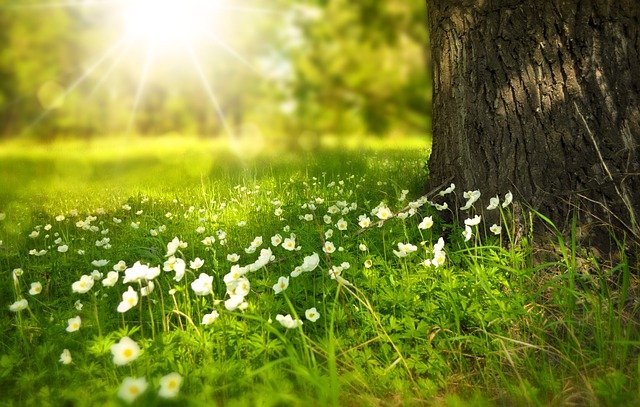
To carry out photosynthesis, plants need adequate sunlight exposure. They become dull when their foliage does not receive enough sunlight to perform photosynthesis.
Similarly, Oxalis’ foliage becomes droopy when not properly exposed to sunlight. Consider its sunlight exposure next time you wonder why my Oxalis is drooping.
Where Should You Put Your Drooping Oxalis? Oxalis should be positioned in a brightly lit area if it is drooping. Direct sunlight is best for this plant. It is best to place it near a window facing north or east. However, don’t expose it to direct sunlight as the sun can burn its leaves.
3. Extremely Low Humidity
Oxalis plants transpire more quickly when placed in low humidity. Leaf transpiration is faster than root absorption. The result is dull, droopy leaves.
How humid should Oxalis be? At least 50% humidity is needed for Oxalis to transpire properly. Therefore, you should use a humidifier to increase the humidity level in your home if it is less than 50%.
To provide your Oxalis plant with the right amount of moisture, you can also place it on a pebble tray. Once the humidity is set at 50% or more, the drooping Oxalis will once again take on a healthy shape.
4. Drowsy Soil Mix Causes Oxalis To Droop
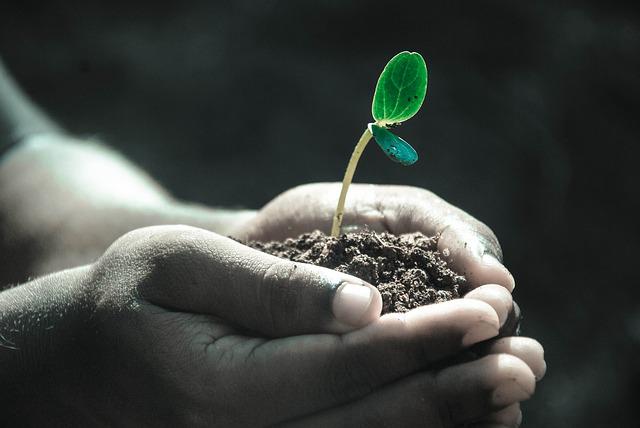
Oxalis planted in a fast-draining potting mix cannot absorb enough water because water drains quickly through the drainage hole. As a result, leaves become dull and limp due to a lack of water.
Oxalis Potting Mix: What’s the Best? Oxalis should be grown in rich and fertile soil and that drains well but does not dry out too quickly. Growing Oxalis in potting soil and peat moss is the best method.
5. Pest Infestation
Pests such as aphids, mealybugs, spider mites, and thrips can infest your Oxalis plant and cause it to droop. These pests feed on the sap of the plant, which can weaken it and cause its leaves to wilt.
To prevent pest infestation, regularly check your Oxalis for any signs of pests and treat them with neem oil or pesticide if necessary.
6. Disease
Diseases can also cause your Oxalis plant to droop. Vine weevils, blackflies, and other infections cause stunted growth, yellowing, and dusty leaves. To prevent disease, keep your Oxalis clean and avoid overcrowding. Also, avoid overfeeding your Oxalis with fertilizers, leading to improper watering and increasing the disease risk.
Symptoms of Oxalis Drooping
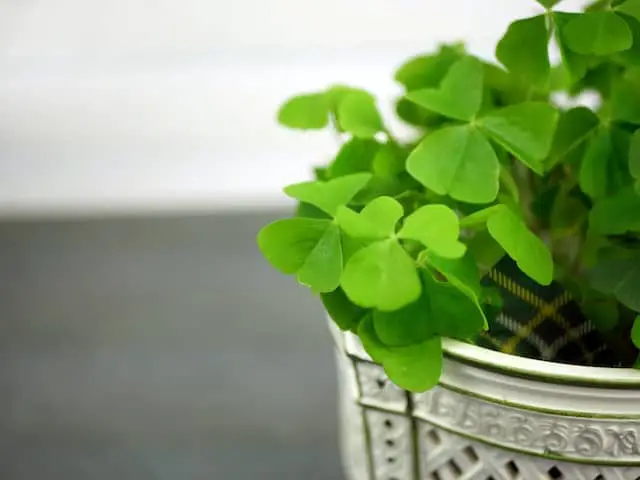
Your Oxalis drooping is a telltale sign that the plant isn’t receiving proper care. Some of the most popular signs include:
1. Wilting Leaves
Wilting leaves are the top common sign that your plant is drooping. It could be a sign that the plant is not receiving enough water causing the leaves to limp.
2. Leggy Growth
Another symptom of oxalis drooping is leggy growth. If your oxalis plant is growing tall and spindly, it’s a sign that it is not receiving enough light. Inadequate lighting can cause the plant to stretch towards the light, resulting in leggy growth.
3. Yellowing Leaves
Yellowing leaves are also a symptom of oxalis drooping. If the leaves on your oxalis plant are turning yellow, it could be a sign that it is not receiving enough nutrients causing the leaves to fall off.
4. Brown or Mushy Stems
Brown and mushy stems could be a sign of overwatering. Overwatering can cause root rot which eventually leads to brown or mushy stems.
5. Drooping or Crispy Foliage
Drooping or crispy foliage is also a symptom of oxalis drooping. If the foliage on your oxalis plant is drooping or becoming crispy, it could be a sign that it is not receiving enough water or that you are exposing it to excessive sunlight.
Go to a similar post: Peperomia Drooping
Summary
Plants like Oxalis are beautiful and low-maintenance indoor plants but can suffer from droopy foliage. People who own Oxalis are often asked the same question: why is my Oxalis drooping?
Watering too deeply, poor soil, insufficient sunlight, dusty leaves, low humidity, and pest infestation are all examples of minor mistakes that cause it. Some natural causes can also cause drooping foliage on Oxalis plants.
Good news: if you’re aware of how to handle each of these issues, you can get your plant back to its former glory!
Frequently Asked Questions
What is the recommended watering schedule for Oxalis?
Water every 1-2 weeks, allowing the soil to dry halfway down between waterings. When the light is brighter, you will water more often, and when the light is lower, you will water less often.
Is Oxalis tolerant of direct sunlight?
Oxalis needs gritty soil, bright filtered light, and low humidity for indoor growth. Hardy woodland species should be planted in full or partial shade on moist, fertile soil that is humus-rich. Hardy Oxalis species require full sun, well-drained soil, and moderately fertile soil.
How should an oxalis plant be cared for indoors?
Light shade and well-drained soil are ideal conditions for this Oxalis. The more light it receives and the cooler the temperature (60 to 70 degrees), the brighter and more vibrant the foliage and flowers. Make sure to fertilize regularly.
How can I revive my drooping Oxalis?
When reviving a drooping oxalis, the first step is to identify the cause of the drooping. If the plant is overwatered, stop watering it until the soil dries out. On the other hand, if your plant needs more water, feed it thoroughly and make sure the soil is moist but not soggy. Finally, move it to a brighter location if it’s not receiving enough sunlight.
What causes Oxalis to droop?
Oxalis droops for various reasons, such as overwatering, underwatering, low humidity, and lack of sunlight. When the soil is too wet, the plant roots may rot, leading to drooping leaves. Similarly, when the soil is too dry, the plant may not get enough water, leading to drooping leaves.

Hey, I’m Lisa and I’ve been an avid gardener for over 30 years. I love writing, talking and living in the garden! Feel free to connect with me on my socials below

